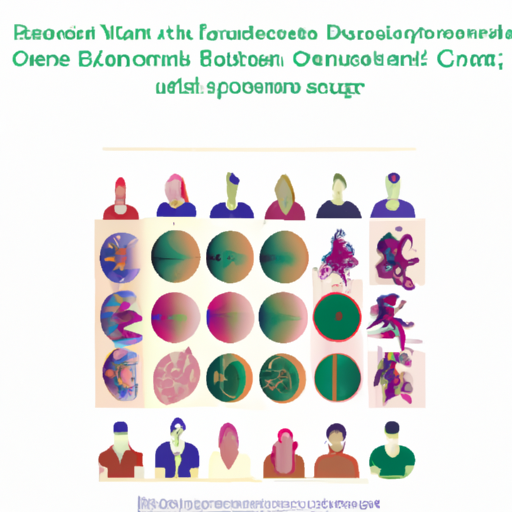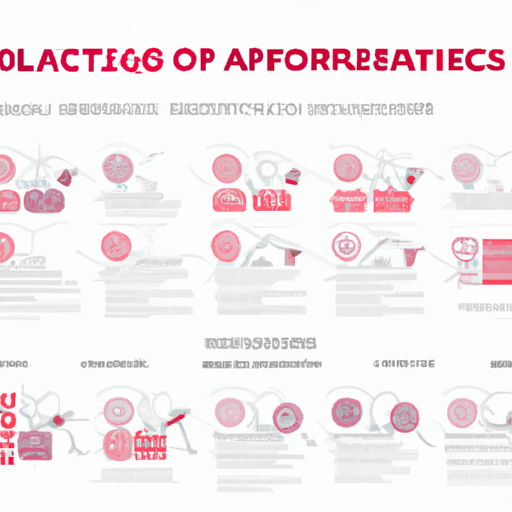This blog post elucidates the significance of implementing tailored distribution strategies for rare diseases. It will delve into the unique challenges that rare diseases present and how personalized strategic solutions can address these to ensure equity in healthcare access and delivery.
Understanding the Unique Challenges of Rare Diseases
Rare diseases pose unique challenges that necessitate tailored distribution strategies. These diseases affect a small percentage of the population, making it difficult to gather comprehensive data and develop effective treatments. Additionally, rare diseases often have complex symptoms and require specialized medical expertise. This means that patients may have limited access to healthcare professionals who can accurately diagnose and treat their condition. Moreover, the limited availability of treatments and medications for rare diseases further exacerbates the challenges faced by patients.
Furthermore, the rarity of these diseases often leads to a lack of awareness among healthcare providers, resulting in delayed or misdiagnosed cases. Patients with rare diseases often face a long and frustrating journey to obtain an accurate diagnosis, which can significantly impact their overall health outcomes. Additionally, due to the limited number of patients with a specific rare disease, there is a lack of clinical trials and research, hindering the development of new treatments.
In addition to the medical challenges, rare diseases also present unique logistical and financial obstacles. The limited patient population makes it economically unfeasible for pharmaceutical companies to invest in large-scale manufacturing and distribution of medications. This leads to limited availability and high costs of treatments, making it difficult for patients to access the medications they need. Furthermore, the specialized nature of rare diseases often requires medications to be stored and transported under specific conditions, which adds complexity to the distribution process.

An illustration depicting the complexity and diversity of rare diseases
Why a One-size-fits-all Approach Doesn't Work?
Limited Patient Population:
The first reason why a one-size-fits-all approach doesn't work for rare diseases is the limited patient population. With rare diseases affecting a small percentage of the population, it is not feasible to apply the same distribution strategies used for common diseases. The unique nature of rare diseases requires a more personalized approach to ensure that patients receive the specific treatments and medications tailored to their condition.
למידע בנושא של The Importance of Tailored Distribution Strategies for Rare Disease וtruemed נא לבקר ב- truemedtx.com
- Diverse Symptoms and Needs:
Another factor that highlights the ineffectiveness of a one-size-fits-all approach is the diverse symptoms and needs associated with rare diseases. Unlike common diseases with well-defined symptoms, rare diseases often present a wide range of symptoms that can vary from patient to patient. This means that a standardized treatment plan may not address the specific needs and challenges faced by each individual. A tailored distribution strategy takes into account the unique symptoms and requirements of each rare disease, ensuring that patients receive the appropriate care and support they need. - Complex Treatment Regimens:
Rare diseases often require complex treatment regimens, involving multiple medications and therapies. These treatment plans are often customized based on the patient's specific condition, genetic makeup, and response to previous treatments. A one-size-fits-all approach fails to accommodate these complexities and may result in suboptimal outcomes for patients. By implementing tailored distribution strategies, healthcare providers can ensure that patients receive the right combination of medications and therapies, increasing the chances of successful treatment and improved quality of life.
The Role of Personalized Distribution Strategies in Addressing these Challenges
Personalized distribution strategies play a crucial role in addressing the unique challenges posed by rare diseases. These strategies are designed to cater to the specific needs of patients with rare diseases, ensuring that they receive timely access to the necessary treatments and medications.
One key aspect of personalized distribution strategies is the identification and engagement of specialized healthcare professionals who are knowledgeable about the specific rare disease. These professionals can provide expert guidance and support to patients, helping them navigate the complexities of their condition and treatment options. By establishing a network of specialists, personalized distribution strategies ensure that patients receive the specialized care they require.
Additionally, personalized distribution strategies involve close collaboration between healthcare providers, pharmaceutical companies, and patient advocacy groups. This collaboration enables the development of comprehensive care plans that take into account the unique challenges faced by patients with rare diseases. By working together, these stakeholders can streamline the distribution process, ensuring that medications and therapies reach patients efficiently and effectively.
Another important component of personalized distribution strategies is the use of technology and data analysis. By leveraging advanced technologies, healthcare providers can track and monitor patient outcomes, identify trends, and make data-driven decisions to optimize distribution strategies. This enables the identification of areas for improvement, such as reducing supply chain inefficiencies or enhancing patient adherence to treatment plans.

An infographic illustrating how tailored distribution strategies can address the specific needs of rare diseases
Can Tailored Distribution Strategies Improve Overall Health Outcomes?
Tailored distribution strategies have the potential to significantly improve overall health outcomes for patients with rare diseases. By addressing the unique challenges faced by these individuals, these strategies can enhance the accessibility and availability of treatments, leading to better health outcomes.
Firstly, tailored distribution strategies ensure that patients receive the right treatment at the right time. With rare diseases, delays in accessing appropriate medications can have severe consequences. By streamlining the distribution process and reducing logistical barriers, tailored strategies enable patients to receive timely treatment, preventing disease progression and improving outcomes.
Moreover, personalized distribution strategies can improve medication adherence rates among patients with rare diseases. These strategies can include educational programs, patient support systems, and reminders to take medications regularly. By addressing the specific needs and challenges faced by each patient, tailored strategies can enhance patient engagement and motivation, leading to improved adherence and better health outcomes.
Additionally, personalized distribution strategies can contribute to the development of more effective therapies. By closely monitoring patient outcomes and collecting real-time data, stakeholders can gain valuable insights into the efficacy and safety of treatments. This information can then be used to refine and optimize therapies, ensuring that patients receive the most effective interventions for their rare diseases.
Furthermore, tailored distribution strategies can improve the overall patient experience. By providing personalized support and assistance throughout the treatment journey, these strategies help alleviate the emotional and practical burdens faced by patients with rare diseases. A more positive patient experience can translate into better treatment adherence, increased patient satisfaction, and ultimately, improved health outcomes.
Adopting a tailored distribution strategy for rare diseases is not only beneficial but crucial. It fosters improved healthcare outcomes by ensuring that every patient, regardless of the rarity of their condition, has timely and equitable access to necessary treatments. The goal is to make sure that no one is left behind in the race towards global health improvement.
